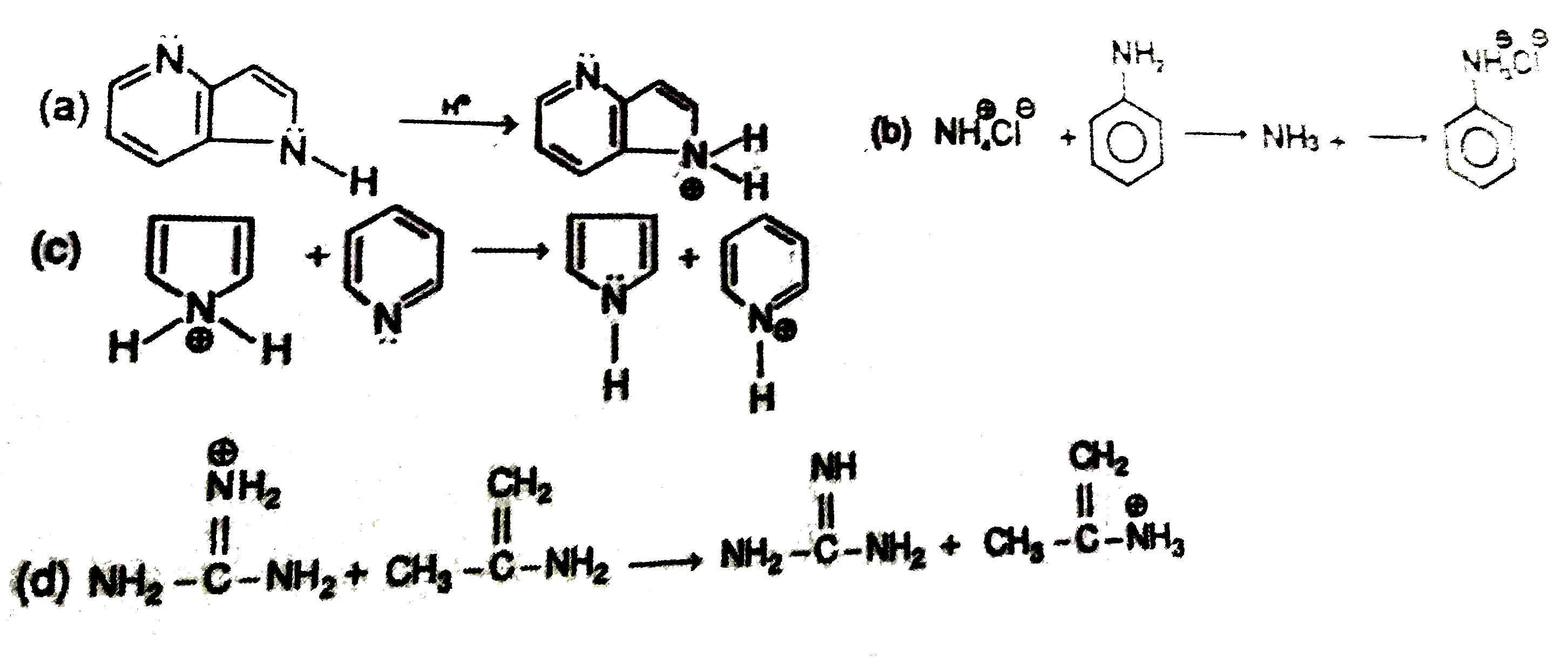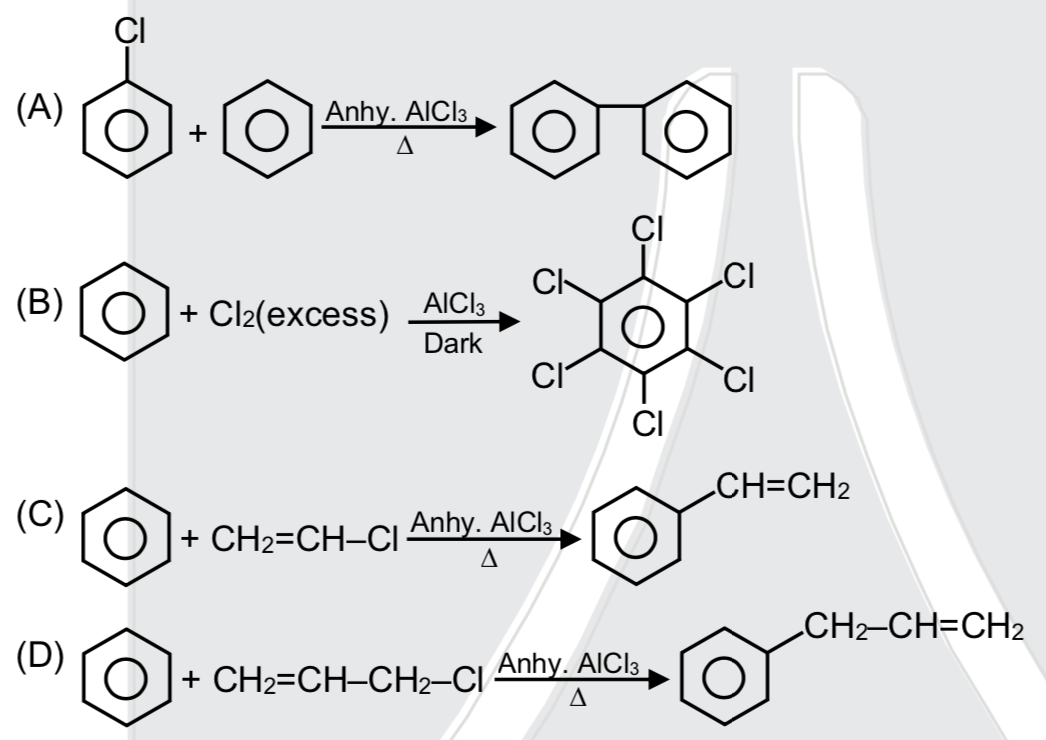Which of the following reactions is/are feasible?
CH3CH2Br++Na−O−CH3| C | CH3−CH3→CH3CH2O−CH3| C | CH3−CH3
CH3−CH3| C | CH3−Cl+Na+O−CH2CH3−CH3CH2−O−CH3| C | CH3−Cl
Both (a) and (b)
None of the above
The correct Answer is:A
To determine the feasibility of the given reactions, we will analyze each reaction step by step based on the principles of Williamson synthesis.
Step 1: Identify the Reactions
We have two reactions involving the formation of ethers. The first reaction involves a primary alkyl halide and a tertiary alkoxide, while the second reaction involves a tertiary alkyl halide and a primary alkoxide.
Step 2: Analyze the First Reaction
In the first reaction:
- Reactants: Primary alkyl halide and tertiary alkoxide.
- Mechanism: This is a Williamson synthesis reaction where the sodium alkoxide (R-O-Na) reacts with the alkyl halide (R'-X).
- Feasibility: The primary alkyl halide is less sterically hindered, allowing the nucleophilic oxygen from the alkoxide to attack the electrophilic carbon of the alkyl halide. This results in the formation of an ether (R-O-R') and sodium halide (NaX). Therefore, this reaction is feasible.
Step 3: Analyze the Second Reaction
In the second reaction:
- Reactants: Tertiary alkyl halide and primary alkoxide.
- Mechanism: In this case, the tertiary alkyl halide is sterically hindered, which prevents the nucleophilic attack by the alkoxide. Instead, the reaction tends to undergo elimination rather than substitution, leading to the formation of an alkene and an alcohol, rather than an ether.
- Feasibility: Since the reaction leads to elimination and does not yield the desired ether, this reaction is not feasible.
Conclusion
Based on the analysis:
- The first reaction is feasible (produces ether).
- The second reaction is not feasible (produces alkene and alcohol).
Final Answer
Only the first reaction is feasible.
---
We have two reactions involving the formation of ethers. The first reaction involves a primary alkyl halide and a tertiary alkoxide, while the second reaction involves a tertiary alkyl halide and a primary alkoxide.
In the first reaction:
- Reactants: Primary alkyl halide and tertiary alkoxide.
- Mechanism: This is a Williamson synthesis reaction where the sodium alkoxide (R-O-Na) reacts with the alkyl halide (R'-X).
- Feasibility: The primary alkyl halide is less sterically hindered, allowing the nucleophilic oxygen from the alkoxide to attack the electrophilic carbon of the alkyl halide. This results in the formation of an ether (R-O-R') and sodium halide (NaX). Therefore, this reaction is feasible.
In the second reaction:
- Reactants: Tertiary alkyl halide and primary alkoxide.
- Mechanism: In this case, the tertiary alkyl halide is sterically hindered, which prevents the nucleophilic attack by the alkoxide. Instead, the reaction tends to undergo elimination rather than substitution, leading to the formation of an alkene and an alcohol, rather than an ether.
- Feasibility: Since the reaction leads to elimination and does not yield the desired ether, this reaction is not feasible.
Based on the analysis:
- The first reaction is feasible (produces ether).
- The second reaction is not feasible (produces alkene and alcohol).
Only the first reaction is feasible.
Similar Questions
Knowledge Check
Which of the following reactions is not feasible?
A B
B C
C D
D
Which of the following reactions are not feasible?
A B
B C
C D
D
Which of the following reaction is not feasible?
View SolutionWhich of the following reaction is feasible ?
View SolutionWhich of the following reaction is feasible?

View SolutionWhich of the following reactions are possible ?

View SolutionWhich of the following reactions are possible ?

View SolutionWhich of the following reactions is/are not intermolecular redox reaction?
View Solution
